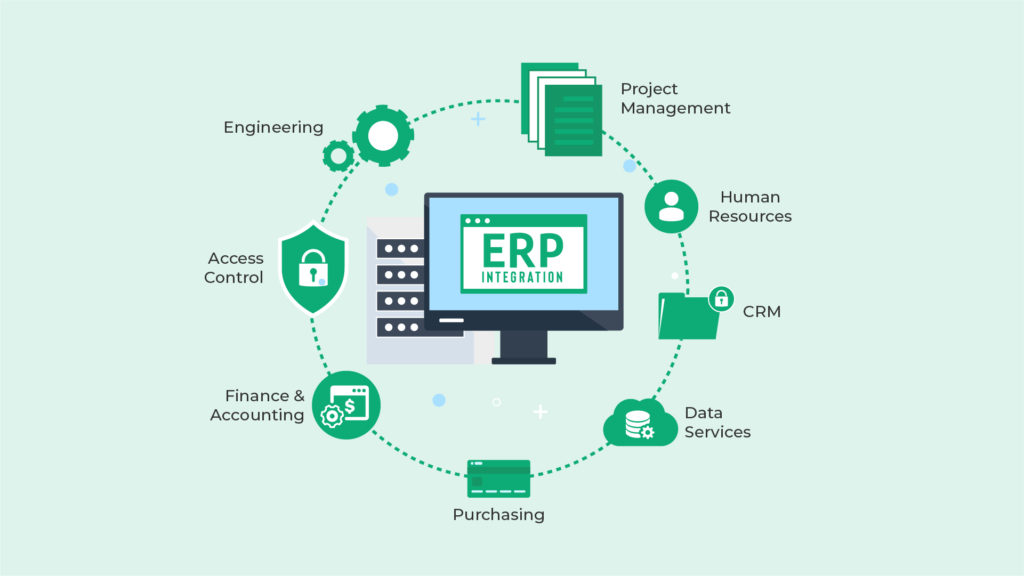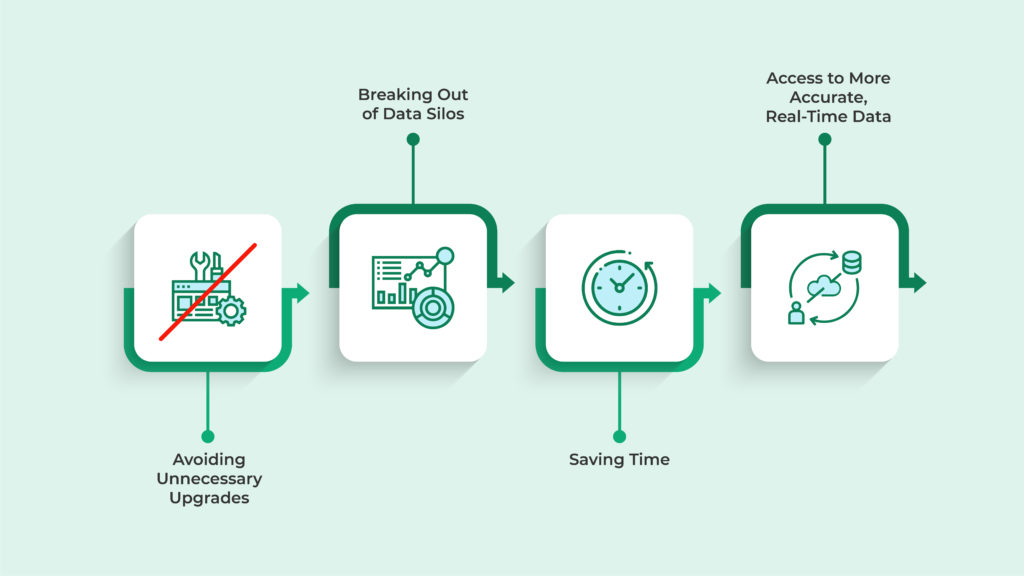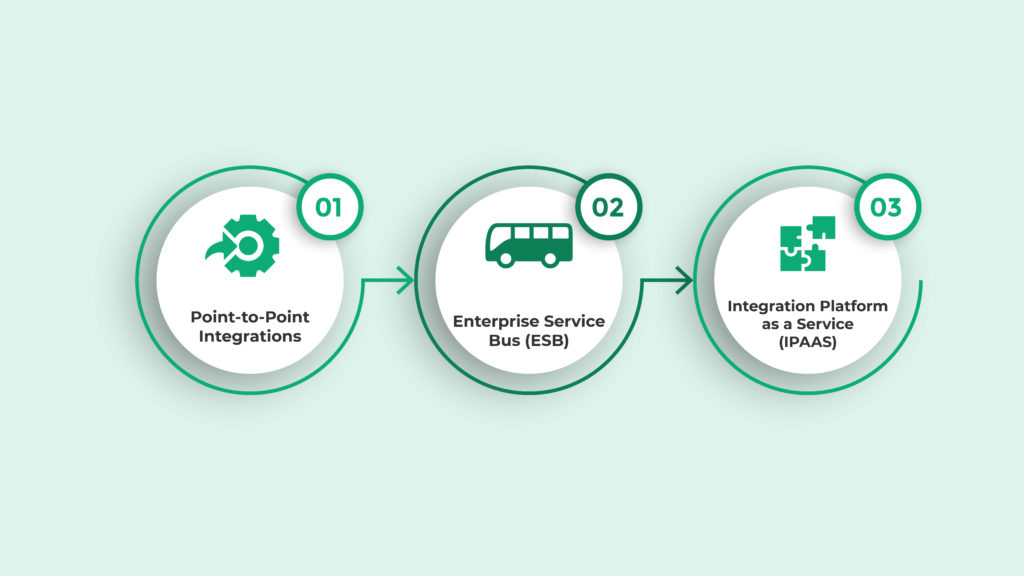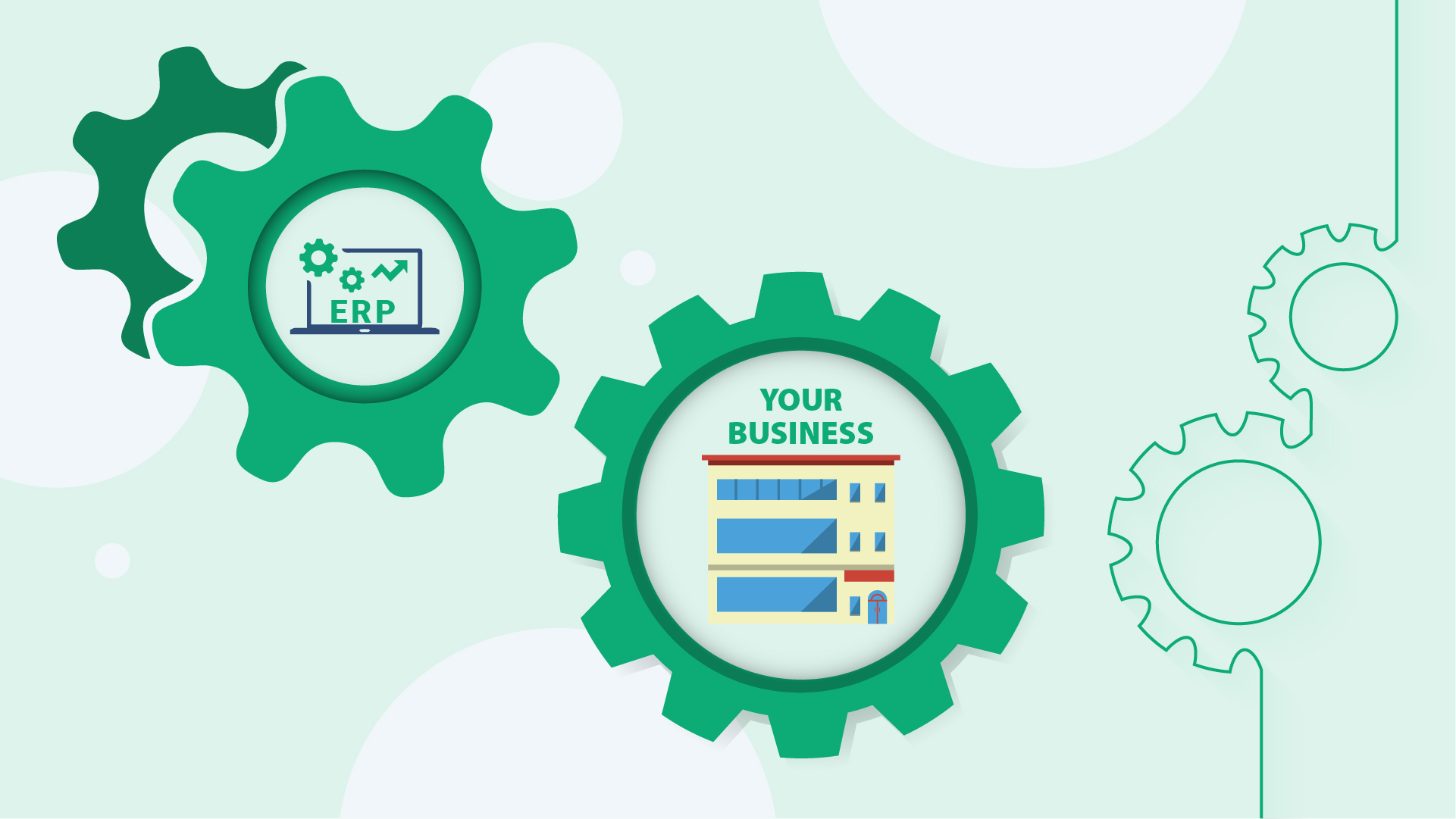Enterprise resource planning (ERP) systems are becoming more popular for growing businesses, and as a result, the need for effective ERP integrations is increasing. ERP integration is the method by which a business can connect its ERP software to its other systems in order to share data that can improve productivity, provide insights and create a single source of truth.

ERP integration is different than an ERP implementation, whereby an ERP system is designed, configured, and deployed in an organization. This process can take several months as the organization and ERP vendor work to understand the workflows required to manage various work processes. Integration, in theory, should be much more straightforward.
In today’s world, most modern software applications are built with the expectation that the software needs the ability to communicate and work with different subsystems. This is usually accomplished through different application programming interfaces (APIs), connectors, enterprise service buses, and/or integration platform-as-a-service tools. However, ERP software has fallen behind the curve when it comes to integration capabilities. It’s exacerbated by the fact that many companies are still using old (albeit functional) ERP systems that cost time and money to modify.
What is an ERP Integration?
ERP Integration provides you with a consolidated, unified view of the information housed in a business’s different systems in real-time, whether the data originates from the ERP itself or from other apps. This makes business processes and workflows more efficient whilst increasing collaboration between teams. In order to be truly effective, your ERP needs to access various programs, which is why integration forms an essential cornerstone of every ERP implementation.

The benefits of being able to integrate your ERP with other programs include:
Avoiding Unnecessary Upgrades
Legacy is often seen as a bad word in the tech space, but if a legacy system works well for your business – you can keep using it. By connecting legacy programs to the company’s ERP system (e.g., supply chain management, customer relationship management, or project management software), you can reduce the cost of the license for a new system and prevent disruption to existing processes.
Breaking Out of Data Silos
Data silos sitting in on-premises systems lead to redundancy, inefficiency, and inaccurate data, which hampers your company’s ability to make informed decisions and leads to missed opportunities. Integrating your data into an ERP system provides valuable insight into all of your business processes in real time.
Saving Time
Using disparate systems for various tasks increases the burden on your employees and wastes time that could be spent performing higher-value work. ERP integration can eliminate the duplication of efforts, which allows companies to automate manual processes, freeing up their employee’s valuable time.
Access to More Accurate, Real-Time Data
Without ERP system integration, systems are disconnected and require manual data updates. We see this happen quite often in customer relationship management and order management. Data has to be collected and entered manually, which delays the exchange of information across the customer lifecycle. By integrating with your ERP system, data doesn’t need to be copied between systems, which can save time and reduce errors.
Integrating ERP in Your Business
Any discussion pertaining to ERP integration usually leads to the same question from customers: do I really need integration between my ERP and other systems in my company? Many companies have managed their businesses very well in disconnected environments for years and can continue to manage their businesses without integration for a long time. However, others are simply hesitant to move towards an ERP integration because they aren’t sure what it would involve.
There is a perception in the market that ERP integration requires painful data cleanups, potential data losses, and general IT resourcing headaches that would cause massive business disruption. ERP integrations have as bad a rap as ERP implementations do. However, with the right technology provider, system, and vendor by your side, setting up an ERP integration project can be a seamless experience.
In general, it’s best to start small, with your most critical business software in mind. For example, you could integrate your ERP with your customer relationship management (CRM) tool to share critical ERP data points with your CRM and vice versa. This may include syncing financial management information with your customer data in order to improve customer service or debt collection. You may also want to integrate a quote-to-order system and sync product data across your website and ERP system to improve delivery.
ERP Integration Methods
Your ERP solution may come with pre-built integrations, but these can be limited in scope. It’s unlikely that any single ERP will come pre-built with every integration you need. Many companies have a mix of legacy programs and SaaS applications that lead to various business functions managing their own data and software via disparate systems.

Ultimately, this becomes untenable to maintain their growth and standards. At that point, an ERP integration is usually where the business turns. There are several methods of ERP integrations that these businesses can adopt:
Point-to-Point Integrations
Point-to-point ERP integrations connect one specific piece of software to another. The integration process is quick and efficient if you only have two pieces of software to connect, but most companies require an integration that is far more complicated than that. The number of connections increases exponentially as the number of programs and volume of data increases. Many modern companies use hundreds of different software solutions across the company, placing a huge maintenance and implementation burden on their IT teams.
Enterprise Service Bus (ESB)
The Enterprise Service Bus (ESB) is an on-premises software architecture that enables multiple applications to communicate with one another. Data is provided to the bus in a specific format, and adaptors translate the data to the format required. ESBs work well for on-premise integrations, but it’s not an excellent option for companies that need to integrate with SaaS solutions and third parties. It also adds some complexity to your business, which defeats the purpose of ERP solutions that aim to simplify processes.
Integration Platform as a Service (iPaaS)
IPaaS platforms offer a cloud-based approach to integration so that businesses can sync apps faster and easier than an ESB. They don’t require coding and are generally quite flexible and inexpensive. However, iPaaS has its own share of challenges. It needs to work for multiple scenarios (including business-to-business, application-to-application, cloud service integration, etc.) and handle significant volumes of data at the same. Building and managing an iPaaS platform that can scale and deliver qualitative insights can be difficult.
Which ERP Integration Strategy Is Right For Your Business?
There are a few factors to consider when you decide to integrate with an ERP system. Primary among them are in-house resources, your budget, the number of custom integrations, user training requirements, and the security your ERP vendor will provide to protect your data. All of these will play a significant part in your decision-making process.
At 10X ERP, we approach integration differently. We take an API-first approach to ERP, designing, building, and focusing our system so that it can be reused and extended from the start. This affords you more flexibility, more control, and greater security over your ERP application while making it easier for developers to use and integrate them with other products.
We work with our customers and vendors to set up rules that can be viewed and updated with ease so that maintenance becomes a breeze. If you would like to know more, get in touch to discuss your ERP integration needs. We’re here to help exponentially improve your business.
